

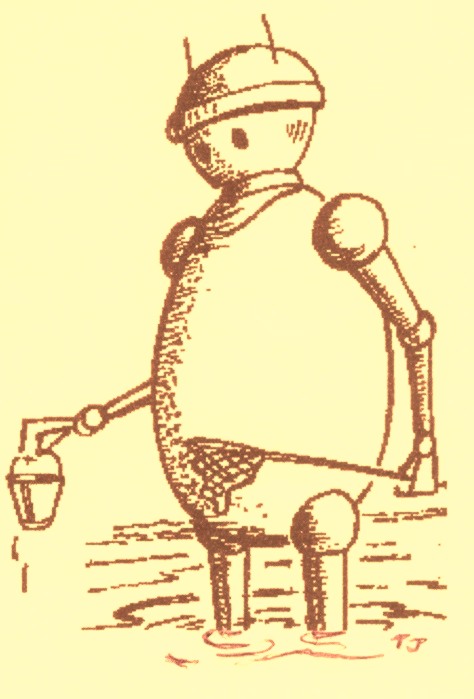
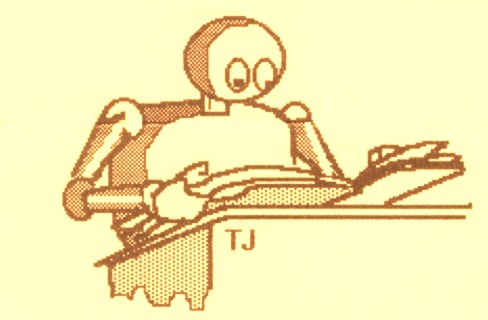 October 2006
October 2006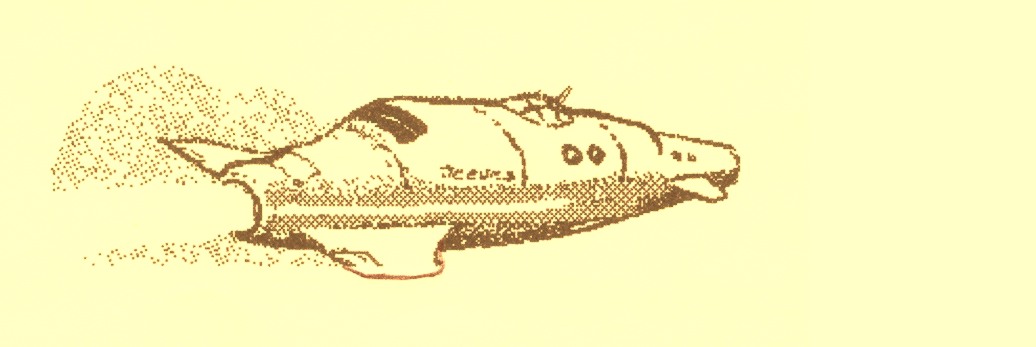
Quitting the Nairobi Trio by Jim Knipfel, Tarcher/Putnam
2000, 291pp, bibliography, $23.95
I suppose most of us of a certain age remember the Nairobi Trio
from the old Ernie Kovacs TV show - musicians in gorilla suits
who only knew one mindless tune fragment that they played over
and over. So when I saw this at the thrift store with a
dust-jacket photo of the one of the simians, complete with pith
helmet and stogie.... This and his previous book Slackjaw
are both said to be memoirs, and get a blurb quote
(Extraordinary!) from the mysterious Thomas Pynchon.
There are 21 chapters, of which six (but not the first six) are titled with the names of the numerals 1-6, in German. But I see I was wrong in imagining that this is a novel - both books are memoirs by a suicidal schizophrenic, and he says in the introduction that he was writing down his recollection of hallucinations, not surrealism or science-fiction. Of course, this could just be a framing device - and I suspect that some of Philip K Dick's SF was a recollection of hallucinations! Either way, this is remarkably lucid account of lunacy.
Like a few of the other newer books from the thrift store, this one had stuck to the inside of the dust jacket one of those little rectangular plastic gizmos (0.3x1.5 inch) with a barcode on it - an anti-theft device, I think. Annoying to collectors, as they are hard to remove without tearing the paper. I guess once the average hardcover went over $20 the bookstores got more concerned about shoplifting - but is $20 in 2000 really any more in in our inflated money than $2 in 1950?
Lint by Steve Aylett, Thunder's Mouth Press 2005, 223pp,
illus photos, appendix, notes, bibliography, index, wraps, $14.95
A detailed biography of the science-fiction writer Jeff Lint,
including color photos of his book covers. Dainis Bisenieks sent
me this from Philadelphia. There is not a sane sentence to be
found in it, and as far as I can discover the subject of this
biography had one fatal flaw - he never existed.
The Confessions of a Hoaxer by Alan Abel, Macmillan 1970,
252pp, photos.
Another hoax book from Dainis, but in this case the hoaxer at
least is real - if we can trust him and his photos. Abel would
run ads offering squid as pets - perhaps he inspired Jeff
VanderVeer - or pyramids as blimp mooring sites. He "kidnapped"
Gene Krupa, campaigned against nude pets, and arranged for the
first topless string quartet.

Miscellanies The Sixth Volume by Dr. Swift and
others,
Davis & Bathurst, London 1749, 316pp
Probably the oldest book I have, also from Dainis. The only copy
offered at addall.com is said to be a 1st edition, but is
dated 1751. This is an anthology of topical commentary, much of
it very heavy-handedly satirical in the manner of the time.
Between the lack of familiarity with the issues (many have to do
with matters in Ireland!) of 250 years ago, and the archaic
typography, it's not that easy to read. Initial upper-case "S"
and "s" at the end of a word are as we would expect, but the
rest of the use of that letter are almost indistinguishable from
the "f".
I wonder if the readers of the time knew who the authors were - some of the pieces carry no attribution, while others have just the initials of the author at the end. The table of contents has only titles. An address to Parliament has the author's full name. And many of the pieces are dated as having been written about 25 years before the date on the title page, including a detailed account of the execution of a man convicted of making counterfeit coins. Another execution was that of what we would today call a kidnapper (or mugger? - the practice of what are called here street-robbers was to rob drag gentlemen off the street into some dark corner, rob them, and leave them bound and gagged), Ebenezer Elliston - a man of an unlikely level of literacy, whose letter is said to have led to a reduction in the frequency of that crime. But Elliston complains in his piece that illiterate criminals commonly have such letters written for them....
Dreams of a Dark Hue edited by Jon Harvey, Spectre Press
1978, 60pp, illus. David Lloyd, wraps, $3.00
This anthology (5 stories and some poems) was with some fanzines
of the same era sent me by Keith Johnston in Goshen Indiana. The
layout is excellent considering it's done with a fixed-pitch
typewriter, and the artwork is competent but (to my mind)
uninspired. The stories are pretty good.
Daemon in Lithuania by Henri Guigonnat (translated
from the French by Barbara Wright), New Directions 1985, 136pp,
illustrated by Erica Weihs, wraps, $7.95
I found this at the Last Chance Thrift Store. I like short
novels.... This one is told from the point of view of a
9-year-old boy who lives with his extended family in a castle in
Lithuania. The Daemon of the title is a stray cat that
moves into the attic - this is pure fantasy, of course. Over the
period of the novel the cat grows to the size of a St.Bernard
dog, and has a very long fluffy tail in proportion. Uncle
Alexander seems to be a vampire, though not at all evil. About
half way through the story it occurred to me that the characters
were very much the same sort of people who wander through the
illustrations of Edward Gorey in search of a plot!
Stag Lines - The Anthology of Virile Verse ed. by Maxwell
Droke, Phoenix Press 1940, 396pp, indices.
This worn tome has 253 poems and is dedicated to whiskey
distillers Haig and Walker for the inspiration they supplied.
Some of the entries are quite familiar, such as Noyes' wonderful
The Highwayman, others I had never heard of. As a child I
heard the expression "on again, off again, gone again Finnigan"
- and that appears here at the end of a poem in Irish dialect by
Strickland Gillilan. The opening poem by Don Marquis (based on a
quotation from Alexander Pope) bears quoting:
They Had No Poet...
By Tigris or the streams of Ind,
Ere Colchis rose, or Babylon,
Forgotten empires dreamed and sinned,
Setting tall towns against the dawn,
Which, when the proud Sun smote upon,
Flashed fire for fire and pride for pride;
Their names were... Ask oblivion!...
They had no poet, and they died."
Queens, dusk of hair and tawny-skinned,
That loll where fellow leopards fawn...
Their hearts were dust before the wind,
Their loves, that shook the world, are wan!
Passion is mighty... but, anon,
Strong Death has Romance for his bride;
Their legends... Ask oblivion!...
"They had no poet, and they died."...
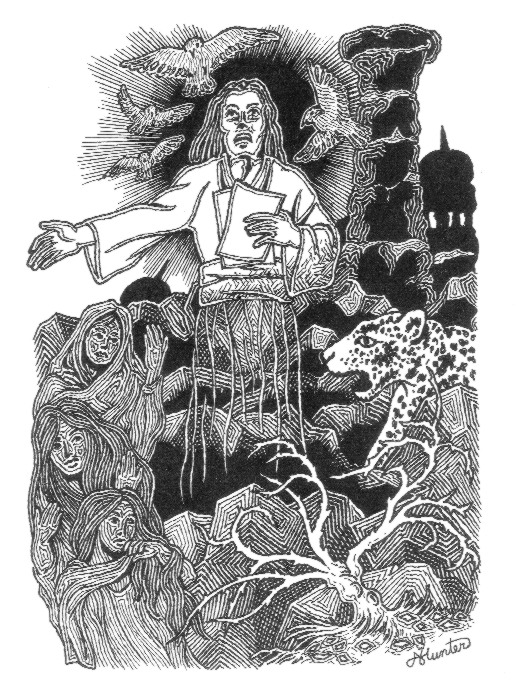
Mecca | Mettle by Thomas M. Disch, edited by Alice
Schmidt, Payseur & Schmidt 2005, 102pp, illustrated by Tim Kirk,
CD, 213/300, $30.
A small book, just over 7 inches tall - large enough for the
pocket in the back which contains an audio CD with music by
Bloodhag. The price is not on the book, I got that from
the website:
http://www.payseurandschmidt.com
A beautifully made hardcover, bound in silver-stamped blue cloth with a Tim Kirk dust jacket. Tim also supplies an illo for the CD, and a dozen or so b&w interior pages.
The book is in the form of an anthology, but I will not mention here the other four authors, as their detailed biographies and bibliographies seem to hint that they suffer from the same deficiency as the Jeff Lint mentioned above.
Tim wrote to say that Bloodhag is an acquired taste - I fear it is one I am not likely to acquire!
A Child's Garden of Grammar by Tom Disch, New England
University Press 1997, 88pp, illustrated by Dave Morice, wraps.
This was in the same package as the above book sent with a note
from Alice Schmidt. There is no price on it that I can read.
Morice is not an artist in the Tim Kirk class, but these rough cartoons are not bad for the purpose. This is a cartoon guide to the parts of the English language and how they are used. I find it a little hard to imagine just who would benefit from the use of it!
Keith Johnston kindly sent a stack of old fanzines, many of
which
I had not seen before:
Mystique #1, edited by Mike Chinn for the British Fantasy
Society in 1988, great art by Alan Hunter and Steve Jones.
Astro-Adventures #3, edited by Robert M. Price in 1988,
with stories by Lin Carter, Frank Belknap Long, and Carl Jacobi.
The Monsters Club #2, edited by Raul Andrew in 1994 -
fully justified typesetting had become easy on the PC - the 1988
zines are typescript, either early WordStar or laborious retyping.
The Diversifier #12 and #22 edited by the Clingan brothers, A.B.
and
C.C. in 1976 and 1977 - issues of this excellent zine that I didn't
have. The inside back cover of #12 is a very short story by Steve Sneyd.
Castle Rock, the May 1988 issue of the Stephen King newsletter.
Science Fiction Review #18 edited by Richard Geis in 1976
- another one I didn't have, with a beautiful Grant Canfield
cover showing an alien at his alien typewriter.
Gothic for June 1980 edited by Gary William Crawford -
beautifully typeset printed on heavy paper, but with no artwork
at all!
Twisted #3 edited by Christine Hoard in 1986 - a nicely
made horror zine with lots of poetry and some very striking artwork.
Magic at Wychwood by Sally Watson, Knopf 1970, 128pp,
illustrated by Frank Bozzo
The only children's book I ever saw with a bound-in (part of a
signature) "Erratum" page - four of the double-page illustrations
were put in the wrong place. Perhaps the surname Bozzo is unlucky!
Everett Rand sent me a copy of issue 16 of his zine
Mineshaft whose slogan is "mining the depths for
unpredictable visual and literary ore" - 56 pages digest size,
saddle-stapled. And they dug up some pretty good stuff - even
got a long letter from Robert Crumb. This issue is more visual
than literary - aside from the Crumb letter, there is an excerpt
from a novel about the Golem. See:
http://www.mineshaftmagazine.com
Quake, Quake, Quake by Paul Dehn, Simon and Schuster 1961,
109pp, illustrated by Edward Gorey, $3.50
This is a poetry collection - all Cold-War parodies of
well-known verse, gloomily illustrated by one of my favorite
artists. Between the pages I find a flyer ("15 Minutes to Zero")
from SANE, an anti-nuclear-war organization of the time with a
Gorey illo from the book. There is a form to order these flyers
at a penny each.... There was no nuclear war, so I guess SANE
succeeded! Also between the pages are index cards on two other
Edward Gorey books - Muriel Spark's The Very Fine Clock
and Ennis Rees' More of Brer Rabbit's Tricks. I have two
of the first and none of the second if some other Gorey nut
would like to trade.
Start from Somewhere Else by Oliver St.John Gogarty,
Doubleday 1955, 189pp, d/w art by Edward Gorey and Augustus
John, $2.95
And there is a page on Lord Dunsany, who was touring the US at
the time. Gogarty is a great Irish wit and story-teller, though
I must admit that the point of some of these anecdotes eludes me
because I don't have the background.
Fiction ed. Christophe Duchet et al, Les Moutons
Electriques, Tome 2 Autumn 2005, 335pp, illustrated, trade
paper, 19 euros
And all in French. Rene Beaulieu kindly sent me this in thanks
for some scans of old prozine pages. The illustrations are
mostly F&SF cartoons, but there is also a Kelly Freas
caricature of a young Robert Silverberg dated 1958 that I don't
remember seeing before. A very nice production, with signatures
on good paper glued into a wraparound card cover with flaps. The
cover art is attributed to F'murrr and shows a "moutong
eclectrique", which must be an elaborate pun. I think
"Tome 2" means Volume 2, and it is also subtitled anthologie
periodique - a series anthology, I suppose.
I send a scan of the Freas art to Mr Silverberg, who is on a Yahoo-list with me, and he denies ever looking like that.... He says there is a Freas caricature of him, but that's not it.
Teen Witch by Silver RavenWolf, Llewellyn 2000, 251pp,
diagrams, reading list, index, wraps, $12.95
Striking cover painting of five teens - four of them girls and
two of those in rather erotic costumes. One of the girls is
black. This is subtitled "Wicca for a new generation" and is a
manual of instruction on how to perform ritual. The "suggested
reading" list is not all Llewellyn books, but 13 more grimoires
are offered in the back. The author is said to be a Wiccan
Priestess and the mother of four witches! There is a short
section - a little less than a page - warning novice witches to
stay away from the "dark side".
SnarCC by Byron Sewell, August A. Imholtz Jr., and Mark R.
Richards; Force Five Press, Hurricane WV 2006, 59pp, #31/42 NFS
Byron Sewell kindly sent me this (and even mentioned me in it)
because I had supplied him with a photocopy of a Hunting of
the Snark item from Ron White's fanzine Inside - "The
Baker Murder Case" by Larry Shaw with art by Jack Gaughan.
This is a compilation of Snark-related items in honor of the 130th anniversary of the publication of the poem by Lewis Carroll. There are 130 entries before they get into music & dance, boats & planes, and some other oddities. I am trying to order the English/Spanish bilingual edition that they mention!
The Early Adventures of Peacham Grew by Roy Helton, Penn
Publishing, Philadelphia 1925, 117pp, illustrated by Edward
Shenton
The dust jacket, though worn, is very attractive. Shenton's
style is a bit like Lynd Ward's woodcuts, rather dark for a juvenile.
The front d/w flap comments are confusing, comparing the book to "Marjory Fleming's Book", a compilation from the writings of a Scots child prodigy who died at the age of 9 in the early 1800s.
Nor does the text reveal more - a child called "Margry" appears but only very tangentially. The story itself is very good in an Alice-in-Wonderland way, with ghosts and fairies and talking animals and the psychotropic effects of fern seed.
There is a sample of the writing of Marjorie Fleming online at the Gutenberg Project site, and a note that her journals were reprinted in 1934. Helton's synthesis of the interior dialog of the child Peacham Grew is very like the precocious prose of Marjorie Fleming.
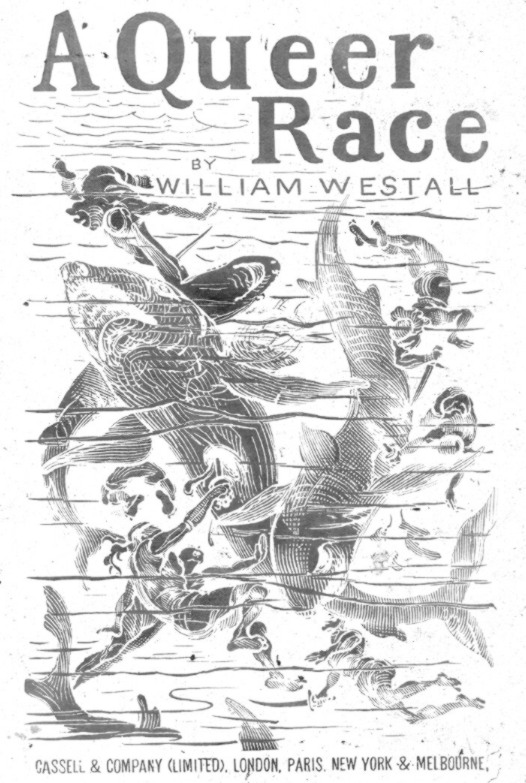
A Queer Race by William Westall, Cassell 1892, 303pp
I ran across this on a Danish book website, and offered the
dealer a trade for items on my duplicates list.
The subtitle is "The Story of a Strange People". I suppose in 1892 the idea of a "lost race" was only marginally fantasy - the people of Fair Island are "strange" in a rather unlikely way that has little to do with the plot - they have piebald skin, the women being mottled white and cinnamon while the men have patches of red and black. The island is protected by fogbanks and impassable rocks. The pictoral cover art shows them fighting sharks - with swords, as described in the text. The island is a monarchy under a Queen Mab. The hero is a British seaman, and marries the queen and imports horses....
The uncredited cover art is in green and tan on black paper - I might be able to publish it here in b&w with the colors inverted.
Fikile Mbalula (fikile_mbalula@yahoo.com) in South Africa (the bird and fish stamps are pretty) offers a nice 1-page fantasy where I would become the beneficiary of 250 million - unit of currency (or other item) not specified. Perhaps he's offering 250 million grains of sand.
I hadn't seen one of these in years - Robert Whitaker once
told me that back before the Internet when he worked at the Post
Office, these things came through his station in bundles!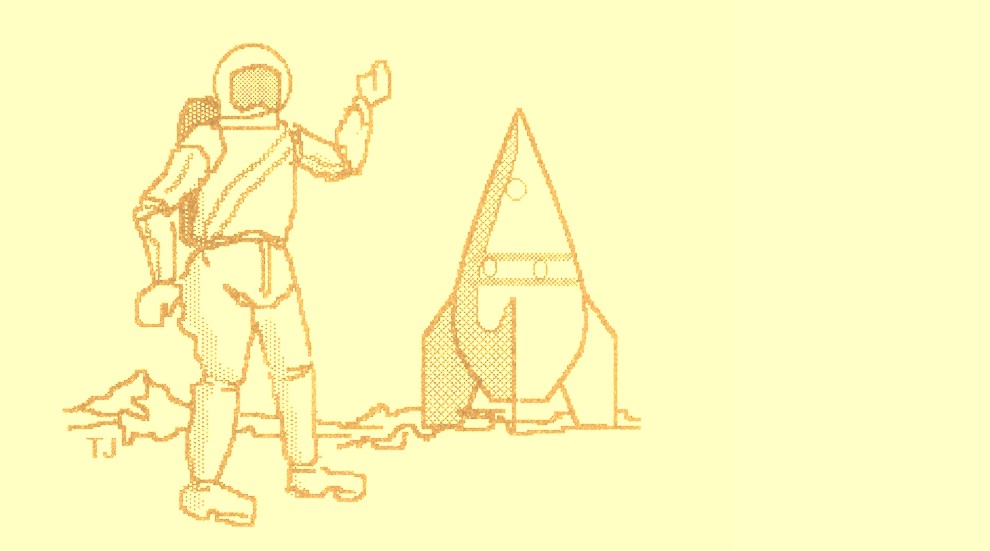
The Melancholy Aihai by Gerald W. Page in
Aberrant Dreams
http://www.hd-image.com/aberrant_dreams/index.htm
A cyber-tale that Jerry sent me the link to, some 13 pages as a
printout in 10-point. H. P. Lovecraft always claimed that what
he wrote was science-fiction, though to modern tastes it seems
more like fantasy or horror - this is rather Lovecraftian
science-fiction, quite atmospheric and yet set in the future
world of spaceship traffic among the stars.
Carnivorous Nights On the Trail of the Tasmanian Tiger
by Margaret Mittlebach and Michael Crewdson, Villard 2005,
322pp, notes, bibliography, illustrated by Alexis Rockman, $24.95
The illustrations are very odd, just pale washed-out looking
impressionistic daubs - and yet there is a 3-page list
explaining the medium used for each one. Most were done with
acrylic polymer on paper. The better ones are said to have been
done with "Port Hacking soil and charcoal". I see that this
"soil" is not some arcane arts material, but actual dirt - other
illustrations contain dirt from other places, and one includes
"rotting wood and wallaby fur".
The text is excellent however, even though of course they don't find a Tasmanian Tiger or thylacine, also called a marsupial wolf - if they had, we would have heard about it. I wish they had published their photographs of the Tasmanian forest. It seems to be full of odd creatures, and there are eucalyptus trees there as large as redwoods.
Write Publishers, Inc. send an "article idea" by a "previously unknown science-fiction writer" named Bob Tannenbaum - I wonder where IGOTS is listed that they thought I would want any such thing? The sample includes dessert (for "desert") and the curious construction "Science FSiction" - and it seems to be about a personal memoir and not very skiffy.
The Strange Music of Erich Zann by R. Nemo Hill,
Hippocampus Press 2004, 52pp, wraps, audio CD, $15
Sent to me by Derrick Hussey. The CD is the text read by the
poet himself. This is a long poem based on the Lovecraft story,
and quite good too. None of the modern rubbish that passes for
poetry because of the way it is arranged on the page - this is
iambic pentameter in rhymed couplets. Very good use of the
material. The reading is excellent, though the poet does not
have a naturally impressive voice.
The Hunting of the Snark translated (or was it?) by Adolfo
Sarabia,
Universidad de Valladolid, 1991, 177pp, notes, TP
Each stanza of the famous Lewis Carroll poem gets a beautifully
typeset page here, with the English in small print at the top.
The nonsense word "Snark" is somehow translated into Spanish as
"Carabon", while "Boojum" becomes "Bulafago". I think these
were the only invented words in the original. Carroll's
quatrains become nine-line stanzas in Spanish, and the attempt
to translate nonsense such as "...threatened its life with a
railway share" is tortured to say the least - but does rhyme.
The introduction seems to claim (as far as my Spanish reaches)
that Lewis Carroll stole the idea of the poem from a poem in
castellano (that is, Castilian Spanish) sent him by Don
Pedro de la Cavada y Lierganes (with whom "Carroll", that
is, Charles Lutwidge Dodgson, was in correspondence), and
reprints a quotation from a note to Carroll:
"Como has podido atreverte a hacer tal cosa? El mundo
sabra de tu vileza. No mas tu amigo, Pedro"
which translates as "How have you dared to do such a
thing? The world will know of your vile act. No more your friend,
Pedro".
This shortly after the first appearance of the poem, given here as March 29, 1876. Don Pedro is also said to have been the guest of Rossetti in Chelsea in 1875, and to have died in 1878 after sending his papers to a Luis Blanco, a retired army officer who he had known in Cuba.
There seems to be no hint as to which language the delaCavada/Dodgson correspondence took place in - perhaps each wrote in his own native tongue and the other was able to read it. So which is the original, and which the translation?
A Tinkling in the Twilight by Edgar Mittelholzer, Secker
&
Warburg 1959, 269pp
I've had this for many years, acquired sometime after reading
his much more common Shadows Move Among Them. In the
process of making an inventory I was struck by the odd title.
It's well-written and interesting, told in the 1st person by a
bookdealer in 1950s London who is either haunted or demented. He
not only has hallucinations, but seems (like the hero of Kurt
Vonnegut's 1969 novel Slaughterhouse Five) to have "come
loose in time" - though he only gets a few decades into the
future, no further than 2044 if I remember correctly. But it is
a silly future - even as compared to what we have gotten into
since 1959.
Sic transit... In one of the books I was inventorying I found as a bookmark a postcard from Walt Willis - mostly by Vincent Clarke (who was visiting him at the time) commenting on It Goes On The Shelf 3. This is a homade card, a photo of Donaghadee Harbour with the date (8'86) in red in the corner, pasted to the paper that had been typed on. Vincent comments on the Arthur Machen piece in IGOTS 3, saying that he has an old pb of The Bowmen with an affadavit inserted swearing that the Angel of Mons did actually appear on the WWI battlefield; and Walt says that Mt.Nephin has none of the ravines Machen mentions, but only "bog, scree, and runnels" - perhaps one man's ravine is another man's runnel....
Dancing and Joking by John Hertz, Westernsfa 2005, 40pp,
illus. divers, wraps
Called a "fanthology" but actually a collection of Hertz's fan
writing with illos from his Vanamonde and an original Ray
Nelson cover. This was published in honor of his being Fan GoH
at Westercon LVII. These are long detailed articles (the print
is quite small) on all sorts of fannish things, from a review of
Magister Ludi to pumpkin bombs. Excellent piece on the
late lamented Bruce Pelz.
When the Dream Dies by A. Bertram Chandler, Sphere, London
1981, 123pp, wraps GBP11.25
I have lost track of who sent me this pb (quite possibly Diane
Fox), but when I read the blurb about "giant mechanical spiders
who imprisoned their captives in a palace of pleasure", I was
reminded of having just read (and can't find the source again!)
that "SF resembles porn in its depiction of impossibly
hospitable worlds".
The City That Never Was by Rebecca Read Shanor, Viking
1988, 254pp, photos, drawings, notes, bibliography, index,
$35.00
A thrift store find, abused and abandoned by the DeKalb County
library system - beautiful skiffy history of proposed building
and bridges not built in New York over the years. The 1921
double-page artist's conception of a multilevel bridge across
the Hudson at West 57th Street could have been inspired by Pauls
or Orban pulp covers.
The Unknown Lovecraft: II - The Reluctant Laureate:
Lovecraft and the Politics of NAPA's E. Dorothy Houtain
Administration (1921-22) by Kenneth W. Faig Jr. for the EOD,
August 2006, 58pp, photos
The Twenties were already roaring in the mundane amateur press
associations - sex, lies, threats of lawsuits. At least they had
gotten past the "pistols at dawn" stage of personal animosity.
The encroachment of factions dealing only in personal malice
and debased and scurrilous journalism should be resisted at the
polls for the good of the whole amateur cause writes HPL
about the 1921 election for president of the National Amateur
Press Association. Nasty doggerel, anti-semitic fake Yiddish
satire, adultery in the grape arbor - and they were all so
formal about it. But Home Brew was a NAPA zine, and
managed to publish things like HPL's Reanimator tale.
Ken Faig may have this as a cyber-file, if you are interested you can reach him at 2311 Swainwood Dr, Glenview IL 60025.
Evil Through the Ages - An Outline of Indecency by
George S. Chappell, Frederick Stokes, New York 1932, 343pp,
illus. in line by O. Soglow, $2.00
Not actually very indecent, but unrelievedly silly - reading it
is like eating cotton candy. Chappell starts in the primal slime
and hits every scandal on the climb to modern American
civilization - at least every one the educated reader of the
30s would get the jokes on - the Egyptians, the Greeks, the
Romans, the Renaissance, Cromwell and that lot, the Puritans and
the Witches, Prohibition - his final conclusion is just as
silly, that Indecency is passe. The Soglow cartoons
are excellent.
Cuentos y Novelas (Vol.III, No.152, Thursday July 20,
1939) ed.Ignacio F. Herrerias [Publicacions Herrerias, SA,
5.5x7.5-inch saddle-stapled, 146pp, 25cents, weekly;
$24.00/year]
My sister brought this back from a visit to Oaxaca Mexico, says
the shops there have a lot of such old Mexican pulps. The title
means "stories and novels". There are actually no stories, but
four articles and part of a novel:
5 - El Choque de la Luna con la Tierra - anon - plot summary of
R.C.Sherriff's "The Hopkins Manuscript"
[Collision of the Moon with the Earth]
8 - Curando la Locura por Medio del Cuchillo - Dr. Julio Cantala
- nonfic on prefrontal lobotomy
[Curing madness with a knife]
11 - El Cultivo de la Seda - anon - nonfic on silkworm
cultivation
[Cultivation of silk]
14 - Siguiendo al Mundo - anon - international news items
[Following the world]
17 - La Reina de Argot - Michel Zevaco - serial (vol.1, "La
Mujer Hombre")
[The Queen of Argot - vol.1, "The Woman Man"]
The uncredited color cover shows a Conanesque woman - in rags
and jackboots with one breast bare - armed with a sword and a
dagger. She is leaping to attack an already bleeding fellow with
raggedy hair and a bandido mustache. My sister thought that this
"woman man", presumably the Queen of Argot, is a
hermaphrodite.... She is very muscular. I don't know if I can
actually read the story - 140 pages of small murky print on
rough paper. The paper, though darkened, is not as brittle as
some old pulps, and the cover is fairly good card, still fairly
white.
Michel Zevaco (1860-1918), it turns out, wrote this in French. "One of the major writers of historical/adventure novels. Maybe even better known for his virulent anarchist views, and general hostility toward all things organized, be it state, religion, etc... Opinions that were edited out of the novels when these were taken up in book form." says French pulp guru Remy Lechevalier in an e-mail to the fictionmags Yahoo-group.

Davy and the Goblin by Charles E. Carryl, Houghton Mifflin
1913, 160pp, illus by E. B. Bensell
This is subtitled What Followed Reading "Alice's Adventures
in Wonderland" and first appeared in 1884 - Alice had
appeared in 1866. This very decrepit copy was at the local Last
Chance Thrift Store. Bensell was not quite in the league with
Tenniel or Henry Holiday - as well as I can tell from the
reproduction of the artwork, which leaves something to be
desired. The back of the title page notes that this was one of
"Twenty-six Thousand" made, so perhaps the plates were wearing
out.
Carryl is not as inventive as Lewis Carroll - he manages a Cockalorum, and a song about a ship named "The Walloping Window-Blind", but also drags in Robin Hood, Mother Hubbard, and Sindbad the Sailor. The Roc is there too, with a basket that she says contains the mysterious "lay-overs for meddlers". I heard that expression a few times as a child in the 1940s, used to mean anything I shouldn't meddle with - but is it original here? Carryl seems to copy Carroll's style and much of the material is traditional. There is quite a lot of what seems to be original verse, but it doesn't seem the sort of stuff that would appeal to a child.
The Unknown Lovecraft: II The Reluctant Laureate:
Lovecraft and the Politics of NAPA's E. Dorothy Houtain
Administration (1921-22) by Kenneth W. Faig, Jr., for the
August 2006 mailing of the Esoteric Order of Dagon, 58pp, photos
(and one uncredited cartoon).
Ken Faig kindly sent me this remarkable history even though I am
not a member of the EOD. I was somewhat intimidated to find that
there is a footnote to the subtitle! NAPA was the National
Amateur Press Association, one of the old mundane precursors of
science-fiction fan apas. They seem to have been more inclined
to political wrangling than I ever was, and over much more
arcane matters. In SFPA we had the Great Tomato Scandal and
squabbles over how legible a zine had to be but nothing like
this. And judging from the photos, they did it all wearing coats
and ties. They held very formal competitions, and gave each
other medals. The Official Editor is 13-year-old John Milton
Heins, and there are accusations not only of sexual impropriety,
but lesbianism! Ken published this because of the possible
importance of the effect of these matters on Lovecraft, who must
have been under a lot of pressure during this period, which also
included the death of his mother and meeting Sonia Greene, who
would become his wife - and he wrote Herbert West -
Reanimator for Home Brew, one of the NAPA zines. Heins
writes a satiric attack on a Jewish member in fake
English/Yiddish dialect.... If I had encountered anything like
this when I joined apas in the 60s, I think I would have just
dropped out - these are not the sort of people I would enjoy
knowing!
Weird Shadows Over Innsmouth ed. by Stephen Jones, Fedogan
& Bremer, Minneapolis 2005, 300pp, illustrated by Randy
Broecker, Les Edwards, Bob Eggleton, and Allan Servoss, $35.00
Gavin Smith sent me this in trade. The Lovecraftian artwork is
excellent, but you have to peer at tiny monograms and signatures
to try to see which artist did which illustration. The twelve
stories are mostly original here - there is a "discarded draft"
of HPL's own The Shadows over Innsmouth, and three other
pieces are reprints. Lovely stuff from the "ghoul-haunted
regions" of Minnesota....
The Best of 10 Story Book ed. by Chris Mikul, Ramble
House 2006, 340pp, photos, divers pulp artists, wraps
No price on the cover (which has original art by Gavin O'Keefe)
and I forget what I paid for it. You probably won't find it at
Barnes & Noble, but Ramble House is easily found online -
http://www.ramblehouse.com
and has many other delights. This one, of course, was edited
twice - first by Harry Stephen Keeler, who bought or wrote the
stories for his "spicy magazine" 10 Story Book
(1919-1940), and then by Mr Mikul, who had to select these 33
tales from what could be found of those 21 years of fragile
pulps.
A surprising number of well-know writers appeared in this 25-cent pulp - Theodore Pratt, Jack Woodford, Zora Neale Thurston (!), August Derleth, Vincent Starrett, Tiffany Thayer, K. M. Kapek (Mikul admits that it has been impossible to prove conclusively that this was the Karl Kapek of R.U.R fame). In the back-cover blurb a quote from Keeler insists that his aim was originality - no "formula" stories would be accepted.
The first story has what appears to be a surprising error - a man plays Russian Roulette with a revolver, sometimes with only one bullet, sometimes with as many as four. But twice we are told that he randomizes the outcome by twisting the barrel! What sort of revolver was this? Surely the author and/or the editor were familiar with the common revolver of the time - the barrel cannot be twisted to any useful effect. We have all seen this done in films - you spin the cylinder.
The second story suffers from careless editing - "Serephina" and "caballero" are spelled two ways each and "mozo" is always misspelled. The story is a silly, predictable fantasy.
The third story misspells the dialect word gonna (for "going to") - is it possible that it was actually spelled "gona" in Chicago before WWII?
But they are original and entertaining stories - before they print any more perhaps they'll hire me as proofreader....
Grobo by E. H. W. Meyerstein, Cecil Palmer, London 1925, 339pp
A first (and only?) edition of an odd old novel - the "London"
is a guess based on the address given on the title page,
"Chandos St., W.C.2" and the the printer's line on another page
that bases him in Gloucester, Great Britain. The thick soft
paper makes it nearly 1.5 inches thick, nicely bound in
black-stamped green cloth.
I think this was meant to be picaresque, but while it is full of incident (some quite supernatural) and colorful characters, the plot and motivations are murky. Grobo is a Spanish boy, bought on a whim from his parents by an English traveller, who then grows up in England. The division of the text into two "Parts" seems pointless, other than to simplify the Roman numerals used for the chapters, of which there are altogether 95!
The Singing of the Future by David Ffrangcon-Davies, John
Lane, London 1907, 276pp, frontis portrait, index.
When I saw this century-old book at the Last Chance Thrift Store
I imagined that the author was a druid who could be blamed for
singing our disastrous history into existence, perhaps with
musical curses. Alas, closer examination revealed that it is
merely a technical tome about vocal music - apparently a popular
one, as it first appeared in 1905 and this 1907 copy is the from
the third edition. There is a preface by Edward Elgar which
explains that the author is himself a singer, and that the book
is a "serious appeal". Just where the "future" comes in is never
clear to me - the text seems to concern itself with serious
music of the author's past. His immediate future is now our
past, and there seem to still be enough people who want the book
that it goes for about ten times what I paid for it - they are
welcome to this copy.
Here's a curious thing - someone online viewed with alarm the fact that a site called zabasearch seemed to know too much about everyone. I found that it does know where I live, and where I used to live; and a number of places where Leland Sapiro lived (but nothing about Claude Degler). But when I asked it about "Ned Brooks", it found me at this address - 4817 Dean Lane, Lilburn GA 30047 - and another Ned Brooks (with the same phone number, though there is no such listing in the phone book) at 4817 Deans Landing Dr, Lawrenceville GA 30043. That seemed a bit too much of a coincidence to be likely, so I looked for the Lawrenceville address with Google/Maps. That street is indeed in the Lawrenceville area - some miles north of here - but it is a short street ending in a cul-de-sac, and only has house numbers from 2000-2299. So my doppelganger must not exist - but is this a computer glitch, or does zabasearch deliberately fatten its output with false data for some reason? I would ask them, but I couldn't find a contact link on their site.
Star Begotten by H. G. Wells, ed. John Huntington,
Wesleyan University Press, Middletown CT 2006, 156pp, notes
I had never read this late "biological fantasia", originally
published in 1937. No price appears on the d/w. This is an
excellent edition with very extensive notes - the text itself is
only 100 pages. I enjoyed it for the characters and the ideas -
there is very little plot and no action at all. It's a
speculation about aliens (referred to as "Martians", but with
the caveat that they might be any extraterrestrials) conquering
the Earth - not by military force as in his War of the
Worlds, but by directing cosmic rays to guide human evolution
so as to turn us into aliens. The protagonist imagines that he
can detect these aliens in precocious children - but all he does
is have long conversations about the matter with two friends. In
the end he decides that his newborn son, and himself and his
wife, are themselves the product of this alien project, and that
it is beneficial - they are the "Star Begotten".
Wells was 70 when this was published, and there is a lot in it about the dismal atmosphere in England at the time with the shadow of World War II looming ever nearer. The Star Begotten are presented as the antidote to the poisonous European tyrants Hitler and Mussolini, people with crystal-clear minds who will lead humanity into a bright future. Alas, 70 years later, there don't seem to be enough of us yet - all we got as "leader of the free world" is King George Dubya, the Star-Spangled Torquemada.
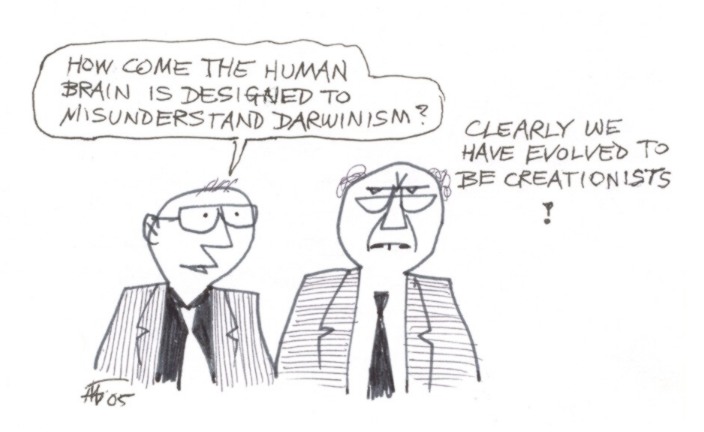
Fancy Free by Eden Phillpotts, Methuen, London 1901,
302/48pp, illustrated by divers hands
I had gotten into the authors with "P" surnames and noticed that
this book has a plate by Sidney Sime of a creature called The
Zagabog.
This creature gets his own poem, like those in the 1923 Bogey
Beasts, but no Josef Holbrooke music. In Sidney H. Sime,
Master of Fantasy (Paul W. Skeeters, Ward Ritchie Press,
1978) this same plate appears but as an "untitled fantasy" and
lacking the caption in Fancy Free, "They're little girls
and boys!", nor does Skeeters say where he got it. In The
Land of Dreams, S. H. Sime 1905-1916 (George Locke, Ferret
Fantasy 1975), the plate appears with the credit to the
Phillpotts book and is printed full-page, much larger than in
Fancy Free, from a 10x14 print that Locke found. Locke
says that "most of" the items in Fancy Free previously
appeared in magazines - but he doesn't say which ones, nor are
there any credits in the book itself. But I could not have
scanned from the Skeeters book or the Locke book, whereas it was
quite easy to scan from the Phillpotts book - so I have put the
Zagabog at the back, with the poem.
None of the other seven artists here are much remembered - and none were as good as Sime. The frontispiece is a frightened tiger by J. A. Shepherd; then there is a man in a fog by A. H. Buckland; Garrick and Boswell and Dr. Johnson by Enoch Ward; a spectral giant hand in the ocean by Arthur Layard (not at all bad!); an uncredited murky mermaid; a fairy by Rene Bull; and something by Cecil Aldin that I may never see, as the plate is missing from this copy. If anyone has a copy with the p.288 plate intact, they might send me a scan....
Gilgamesh translated by Stephen Mitchell, Free Press 2004,
292pp, notes, bibliography, glossary
A thrift store find, lacking the dust jacket. I had never read
the whole thing before. I certainly can't compare it to the
original, which is in cuneiform runes on clay tablets, but this
version is very readable. Gilgamesh was king of Uruk (a part of
what is now Iraq, between the Tigris and Euphrates rivers)
around 2750 BC, and the legend about him is thought to date to
around 700 BC. The saga is not all that long - it takes up 134
pages in this edition, but those are wide-margin, double-spaced
pages. And even that is deceptive, as lists of descriptions in
the text are repeated often. In a way the story is much like
something by Dunsany or Kenneth Morris or Lovecraft, with much
of the action dependent on the whims of a pantheon of strange
gods and demigods. The Biblical account of Noah and the Flood is
mirrored here - Noah is called Utnapishtim and he and his
wife are granted immortality by Enlil, the entity that seems to
be the most powerful god. Other than that account, the story is
about the unlikely adventures of Gilgamesh and his friend
Enkidu, and covers only the time from Gilgamesh being found in
the wilderness by a shepherd, through the death of Enkidu and
Gilgamesh's failed search for immortality and return to Uruk.
Mervyn Peake, The Man and His Art compiled by
Sebastian
Peake & Alison Eldred, ed. by G Peter Winnington, Peter Owen,
2006, 216pp, illus b&w and color, Sources, Bibliography, Notes,
GBP35
A large (9.5x11.5-inch) well-made book on coated paper, and
somewhere around the seventh about this artist - and yet it has
much excellent artwork in it that I had not seen, or had not
seen this well reproduced. The price given is retail - as a
subscriber to Peter Winnington's Peake Studies, I got a
40% discount. Another large book, The Voice of the Heart,
is to appear very soon.
Mervyn Peake was both a great writer and a great artist, and illustrated his own work - a very rare combination of talents. His Gormenghast trilogy has been made into both a film and an opera. He also published several books of verse and illustrated many classics, including an excellent Alice in Wonderland. I was still in college when I wandered into the North Avenue Bookstore near the Georgia Tech campus in Atlanta and stumbled across Titus Groan, the first of the three Gormenghast novels. I bought it at once, and have it still, almost 50 years later.
The Antipodal Route by Guy and Rosy Lillian, DUFF 2006,
57pp, illus photos and Alan White and divers, wraps, $10.
For $10 I think we should get page numbers.... But this is an
excellent report by the winners of the 2003 Down Under Fan Fund
on their trip to Australia - the fans they met, the sights they
saw, the escape from the perils of Hanging Rock and why you
shouldn't go there without a good rope, the Aussie $5 bill
featuring Mr. Spock.... If you want a copy, e-mail -
GHLIII@yahoo.com
- the money goes to the Fund.
"It Comes In The Mail": we also heard from -
Steven Allison, supposedly of the FBI, who sends an e-mail
claiming to have "logged" my "IP-address" on "more than 30
illegal Websites". This was accompanied by an attachment
supposedly containing questions that I must answer. I was not
dumb enough to open the attachment! Are there "illegal
websites"? The courts have twisted the 1st Amendment ("Congress
shall make NO LAW...abridging...the freedom of the press")
to where I have no idea whether this may be an "illegal
fanzine".
Doug Anderson, who notes that Dugald Stewart Walker
(1883-1937), who illustrated the Snythergen mentioned
lastish, illustrated another by the same author a year later -
Squiffer by Hal Garrott. I see from the Net that it is
about a squirrel, and expensive.
Sue Bates, who send a Christmas card.
Dee Beetem from Slanapa, who sends a Christmas card.
Ruth Berman, who was interested in the Dugald Walker
Snythergen; and thinks that the "Bingo" song is late 19th
century; and notes correctly that the "why a flag flutters" that
C. Francis Jenkins attributes to Lewis Carroll is actually by L.
Frank Baum.
***************************************************************************************************************************
"Many Afghans moved to California following the merciless
suppression of their nation by the evil red forces of Great
Britain in the 19th century. Shortly after their arrival, they
taught the miners in Plumas County how to ski and thus
introduced the sport to this nation. Believing the San Francisco
Bay Bridge to be an entrapped goddess which will return them to
their native land, the entire Afghan population does solemnly
gather together on May 22, the National Afghan Liberation Day,
for festivities and, standing on the span, they pelt the shore
with rotten eggs so that it may wish to release the bridge." -
...from Variations on the Dance of Death, Takoma Records
C1004
(shamelessly lifted from Ray Fisher's 1966 Odd 14)
***************************************************************************************************************************
Richard Brandt, who liked the Borges coin - hadn't heard from
him in a dog's age!
Tracy Bentley of Columbus GA, who sends, in an envelope with
commemorative stamps of the 1950s, a nameless densely typed and
scribbled 5-page xerox newsletter - all one paragraph! Maybe I
can find to send him one of my old typed zines with "run-on
paragraphing", a fan tradition of the time - instead of
indenting for a new paragraph, you just turn the line-space knob
up a notch and type on.
Merv Binns, who sends his homade Xmas card, and the
newsletter Out of the Bin (with excellent color photos).
Sheryl Birkhead, who sent a Christmas card.
Ron Clarke, who says he enjoys IGOTS even though he has sold
his SF collection and given his fanzines to Murdoch University -
the mind boggles.
Huberto Closs, another typewriter collector, who sends a
pop-up Christmas card from Brazil.
Wayne Coe, who misunderstood my remarks about The War Romance
of the Salvation Army - I did not mean that the account there
is incorrect, but that I thought the conversations reported had
to be synthesized to some extent. There were no tape recorders
yet, disk or cylinder recording was cumbersome, and likely no
stenographers standing about either.
Alistair Durie, who very kindly sent a set of the 10 British
Lord of the Rings postage stamps with the Tolkien artwork,
in the fancy illustrated folder. These were issued February 26,
2004, but I had never seen them before.
Al Fitzpatrick, who I first met in Australia in 1975, sends a
Christmas Card from New Jersey.
Brad Foster, who says he was reading Charles Dickens'
Bleak House - maybe he will illustrate it; and claims to
have actually been confused by my repetition of the gag line
(one of the things Yogi Berra never said?) about a place that no
one goes anymore because it's too crowded.
Diane & John Fox, who sent a Christmas card; and Voices of
Evil by G. M. Hague from Down Under - a 612-page thriller
that I haven't had time to read.
E. B. Frohvet - at least I think that's the pseudonym of "No
one of any Importance" who lives in Ellicott City MD. But why
did I put just the empty enveope in the box of stuff for this
issue? Oh, here's the letter that must have been in the envelope
- two pages of good handrot.
Alexis Gilliland, who sends a Christmas letter and incloses
two of his excellent cartoons!
Jim Goldfrank, who sends a nice photo card of himself and
Henrietta; and says the film The Da Vinci Code lacks the
depth of the book. Jim also sends a couple of the old Mae
Strelkov hecto paintings that he found - I have several framed,
but more loose ones than I need - if you want one let me
know.
D.Gary Grady, who points out my booboo in speaking of
"factorization of large prime numbers" - I meant factorization
of products of large prime numbers. Gary also gives a
fuller explanation of the Enoch Soames affair, referencing the
excellent article by Teller (of Penn & Teller) in the Nov'97
Atlantic.
Mary Gray, who sends a 1995 newpaper clipping with a cartoon
illo about the demise of the typewriter; and says she might get
over to the Norfolk newspaper to try to find the microfilm of
Will Jenkin's (aka Murray Leinster) first paid writing - an
essay on the centennial of the birth of Robert E. Lee, done when
he was 10 or 11.
Linton Herbert, who publishes Wild Surmise, sends a
wild surmise about the pre-colonial Appalachian forest,
making it sound as idyllic as Robin Hood's Sherwood, and saying
that the pines are just weeds in the ruins of a lost Eden. Well
- maybe. My observation is that the part of my yard not mowed or
in pines is an impassable thicket of pokebush and vicious
blackberry cane.
John Hertz, who liked the Brad Foster art; and seems to deny
my supposition that the O'Brien and Shiffman drawings are
caricatures of him - well, it was just a guess, I wouldn't argue
with anyone about it! John also notes - in reference to the
recent Avram Davidson book - that he used to live hear a tree
that bore red figs, and a Persian student came to get some. And
he recommends Carlyle's Sordello to Phil Ellis as a
model.... John also writes to explain the tumburitza as
unrelated to the tambourine.
Binker Hughes, who sends a card from Kentucky describing an
enclosure - which isn't there - and asking for some fannish
addresses, which I have sent.
Alan Hunter, who says he is still recovering from an attack of
shingles but will see what he can do with a poem I sent him to
do a cover on - excellent cover art as you can see (even if I put it on
p.4 to face the poem). Alan was a
little surprised to see his art in IGOTS 27, and says it
originally appeared in New Worlds in 1950 - something I
didn't know when I used it. Alan also sent his own homade
Christmas card.
Ben Indick, who says that the Brad Foster cover on Holier
Than Thou XX (issue 20) was much raunchier than the one I
ran, and that the zine folded. No - I recently bought a stack of
21 issues of Holier Than Thou on eBay. That one is
included and on through #27. I don't know if #27 was the last -
the MemoryHole index I was working from has just "CEASED?" after
that.
Terry Jeeves, who suggests a plausible prime number generator
- which alas does not work. But he also sent some excellent
fillos! There is in fact a prime number generator - a horrific
equation which does give a prime number, but not in a useful
fashion. It's attributed to Matijasevich et al, and appears on
p.200 of The Music of the Primes by Marcus du Sautoy
(HarperCollins Perennial 2004) -

where A-Z may be any integers and negative results to be
discarded.
Keith Johnston, who sent a Christmas card and a package of
fanzines, mostly from the 80s - see above.
Brant Kresovich, who sends a Chrsitmas card.
Dave Langford, who notes that there is revised edition of the
Seven Men mentioned in IGOTS 27 - Seven Men and Two
Others which contains the additional story Felix Argallo
and Walter Ledgett.
Robert Lichtman, who comments at length on things mentioned
in IGOTS 27, and offers a page of errata on the recent edition
of the late lamented Avram Davidson's The Scarlet
Fig.
Eric Lindsay, who says I can save the cost of sending him the
paper version, as he now reads mostly online. But what does he
line his birdcage with?
Joseph Major, who sends a 4-page e-loc. He notes that when
the US publisher added the glossary to Anthony Burgess' A
Clockwork Orange, they chopped off the last chapter - now I
wonder if I ever read the whole thing. All I have here is the
1963 Norton trade paper edition, which ends with Ch.6.
Eric Mayer, who says his story The Thorn is online
because he couldn't sell it - but I thought it was an excellent
story.
Tom Molloy, who sent a copy of Italo Calvino's t zero,
and article from Forbes by Finn-Olaf Jones on his father's
remarkable library, a photo of himself at the helm of a strange
dinosaur skeleton boat, and the Jan'06 issue of Hemmings
Classic Car.
Murray Moore, who sends a photo-postcard of himself in front
of some fabulous doors at the Victoria and Albert Museaum in
London.
Harry Morris, who sends a beautiful Yuletide card of his own
design!
Dale Nelson, who did not care for the Brad Foster backcover
lastish; and notes that he has been looking for influences on
Tolkien in H Rider Haggard. This is apparently a popular indoor
sport - I have had a few such notes here - and findings
published in a newsletter called Beyond Bree.
Christopher O'Brien, who sends a xerox of The Words of
Guru by Kenneth Falconer (a pseudonym of Cyril Kornbluth) as
it appeared in the June 1941 issue of Stirring Science
Stories - with a note that the New York Public Library has
had a near-complete set of Weird Tales squirreled away for
20 years!
Jerry Page, who sends a Cthulhu Mythos space SF story, The
Melancholy Aihai, in cyber-form - pretty good too!
Rosalind Pardoe, who explains that the DaVinci Code
speculation that the disciple in the DaVinci "Last Supper" is
Mary Magdalen is opposed by the fact that in the oldest texts,
the "disciple who Jesus loved" is always referred to with a male
pronoun!
Derek Pickles, who sent a Christmas card; and details on how
the Nazi Enigma machine fell into British hands; and later an
enormous pile of clippings from the British press on all sorts
of things.
John Purcell, who somehow remembers that I had 178
typewriters in Newport News in the late 1980s! I haven't counted
since it passed 200....
Hank "Wolflord" Reinhardt and Toni, who send a Christmas card
with a photo of howling wolves.
Andy Robson, who says that the Bingo song might have come
from the British music hall of the late 1800s, and that it's an
ideal tune for steam organs! He also sends his massive poetry
zine Krax, which has some pretty good verse and excellent
art by Alan Hunter and Harry Turner.
Bob Sabella, who sends his Visions of Paradise/Wondrous
Stories/Halcyon Days #106 with a note that these will be the
last paper issues except for the ones that go through FAPA. I
have been thinking of doing the same thing with IGOTS! I could
print 50 and have enough for SFPA, Slanapa, and a few
uncyberized Luddites I know.
Langley Searles, who sends a copy of his E.O.D./F.A.P.A. zine
The Annex; and says that I might have mentioned that Leigh
Hunt was a poet (remembered now for "Jenny Kissed Me"); and that
the back cover was "juvenile overkill"; and that I should have
included the address of Nonstop Press (who published the
beautiful Lee Brown Coye book) - he's certainly right about that
last anyway! Nonstop Press, Box 981, Peck Slip Station, New York
NY 10272-0981.
Steve Sneyd, who says that the Brad Foster back cover reminds
him of a line from Kurt Vonnegut's God Bless You Mr
Rosewater about SF and porn sharing a tendency to describe
"impossibly hospitable worlds"! Steve always sends a lot of
interesting UK clippings; and suggested that if I have an extra
cover, I put the It Comes In The Mail section on the other
side, Ace-double fashion. This section seems to be running about
30% of the current issue.
Dale Speirs, who sends me his excellent zine Opuntia,
and also enclosed a photocopy from the July 21'06 Mekeel's &
Stamps Magazine that shows an envelope with an 1876 postmark
that bears a typed address that can be traced as having
been done by the first typewriter made and sold in the United
States, the all-caps 1874 Sholes & Glidden.
Milt Stevens, who says that no one reads amateur poetry - to
my mind all poets are amateurs. There are a few artists that I
really like - that is, I like almost everything they produce. No
poet reaches anything like that status - I only like a few
things by a few poets, and most of them dead. Milt also says
that the Number of the Beast has to be 666 because 6x6=36, and
the sum of the integers 1 through 36 equals 666. Well, that is,
as he says, cool - whatever it may prove.
Jan Stinson, who says she is looking for Beastmaster by
Norton, Wasp by Eric Frank Russell, Octavia Butler novels.
I don't think any of these are rare. Since I got the LoC
however, Octavia Butler has died.
Graham Stone, who finds a long list of slightly improved (in
the same way Brad Foster did lastish) SF titles that he had once
sent through FAPA. He says the name Iris Barry (The Last
Enemy) seems familiar - and indeed she seems to have had a
long and colorful career, writing on archeology and films (said
to be a pioneer in film conservation). She died in her 70s in
1969.
Dave Szurek, who sends his zine Weirdness After
Midnight with a lot of commentary on skiffy movies.
Suzle Tompkins, who sends a card.
Mark Valentine, who blames me for his buying Richard
Harland's The Vicar of Morbing Vyle; and explains that he
designed the Rockall semi-postage stamp mentioned lastish. Mark
says he is collecting "prophetic almanacs", such as a
long-running British series by "Raphael" - these are annual
day-by-day publications of astrological predictions. I don't
know what was done in the US, or what they were called here.
Mark also sent a beautiful little advertising pamphlet for the
"Royal Bar-Lock" typewriter that was stapled into copies of
The Windsor Magazine around 1900 - it claims that these
machines were supplied to Her Majesty the Queen, and shows a
fanciful pre-Raphaelite princess using one.
Alex Vidal, who explains that the "and other Martian tales"
subtitle on all of the Gigamesh Spanish translations of Fredric
Brown stories is nothing specifically to do with Martians but
just a Spanish idiom for fantastic stories.
Bud Webster, who quotes the words that Esenwein (of
Adventures to Come fame) and a G. Schirmer wrote for the
popular bugle tune Taps; and notes that one of the
mysterious contributors to the anthology, Berger Copeland, had a
career as a journalist and may have been the son of inventor
Lloyd Berger Copeland.
Kip Williams, who kindly made me a CD of Gordon Jenkins'
musical fantasy Seven Dreams, which no commercial outfit
has had the taste to reprint from the LP; and sent as well a set
of scans of the pages of the curious 1904 satire D'Ordel's
Pantechnicon by "Prometheus D'Ordel" (actually Mark Sykes and
Edmund Sandars) - detailed suggestions on how to edit an
Illustrated Magazine.
And so closes another issue, in the sixth year of the reign of
the King George Dubya, the Star-Spangled Torquemada. I hope that
all of you had a Happy Halloween, and will have

 A Merry Christmas
A Merry Christmas
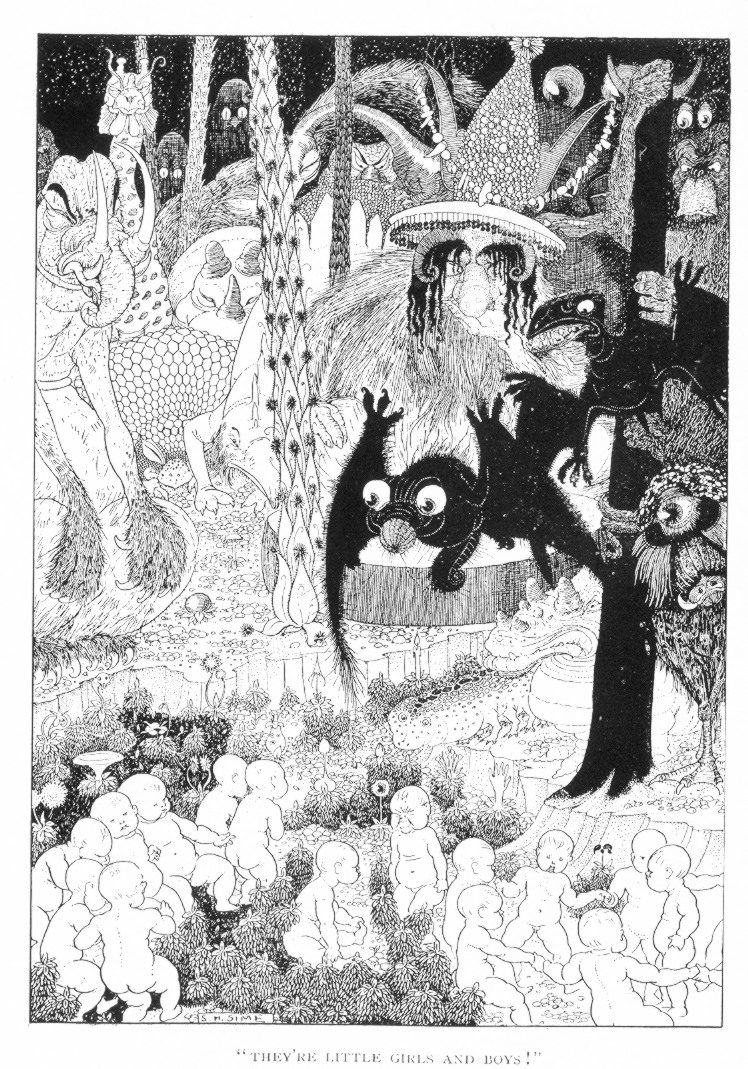
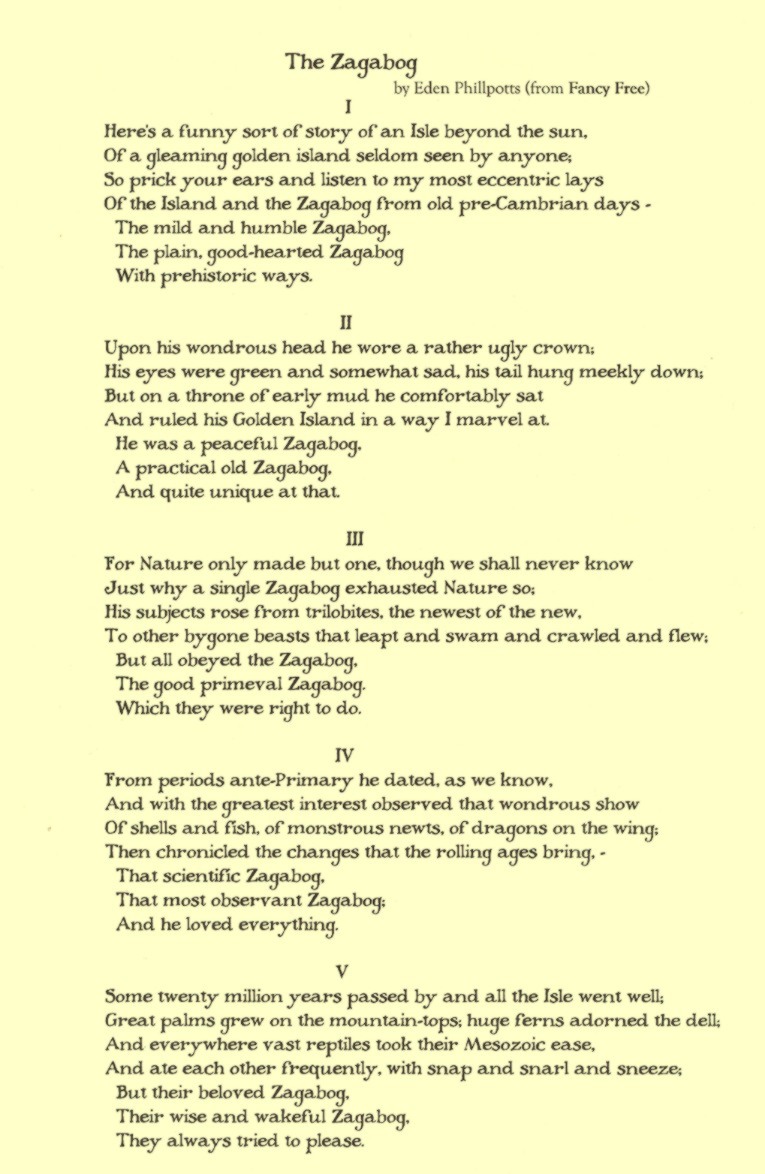
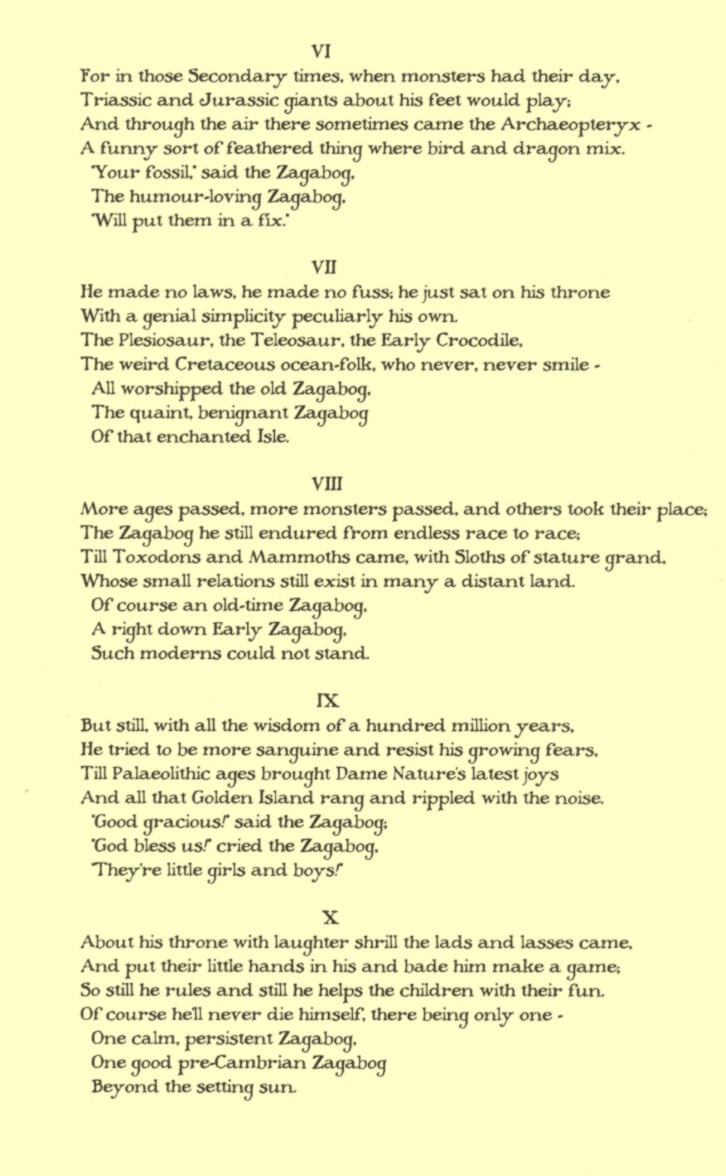
Section 950v. of HR 6166 - Crimes triable by military commissions - includes the following definition. "Any person subject to this chapter who, in breach of an allegiance or duty to the United States, knowingly and intentionally aids an enemy of the United States, or one of the co-belligerents of the enemy, shall be punished as a military commission under this chapter may direct."
The Republicans in Congress have managed, at the behest of Mr. Bush, to draft a bill that all but erases the judicial branch of the government. Time will tell whether this aspect, along with all the others, will withstand legal challenges. If such a challenge comes, it will take time, and meanwhile there is this bill. All of the above is deplorable on its face, indefensible in a nation that prides itself on Constitutional rights, protections and the rule of law.
Underneath all this, however, is where the paranoia sets in.
Underneath all this is the definition of "enemy combatant" that has been established by this legislation. An "enemy combatant" is now no longer just someone captured "during an armed conflict" against our forces. Thanks to this legislation, George W. Bush is now able to designate as an "enemy combatant" anyone who has "purposefully and materially supported hostilities against the United States."
Consider that language a moment. "Purposefully and materially supported hostilities against the United States" is in the eye of the beholder, and this administration has proven itself to be astonishingly impatient with criticism of any kind. The broad powers given to Bush by this legislation allow him to capture, indefinitely detain, and refuse a hearing to any American citizen who speaks out against Iraq or any other part of the so-called "War on Terror".
If you write a letter to the editor attacking Bush, you could be deemed as purposefully and materially supporting hostilities against the United States. If you organize or join a public demonstration against Iraq, or against the administration, the same designation could befall you. One dark-comedy aspect of the legislation is that senators or House members who publicly disagree with Bush, criticize him, or organize investigations into his dealings could be placed under the same designation. In effect, Congress just gave Bush the power to lock them up.
By writing this essay, I could be deemed an "enemy combatant." It's that simple, and very soon, it will be the law. I always laughed when people told me to be careful. I'm not laughing anymore.
In case I disappear, remember this. America is an idea, a dream, and that is all. We have borders and armies and citizens and commerce and industry, but all this merely makes us like every other nation on this Earth. What separates us is the idea, the simple idea, that life, liberty and the pursuit of happiness are our organizing principles. We can think as we please, speak as we please, write as we please, worship as we please, go where we please. We are protected from the kinds of tyranny that inspired our creation as a nation in the first place.
That was the idea. That was the dream. It may all be over now,
but once upon a time, it existed. No good idea ever truly dies.
The dream was here, and so was I, and so were you.
William Rivers Pitt, September 29, 2006
